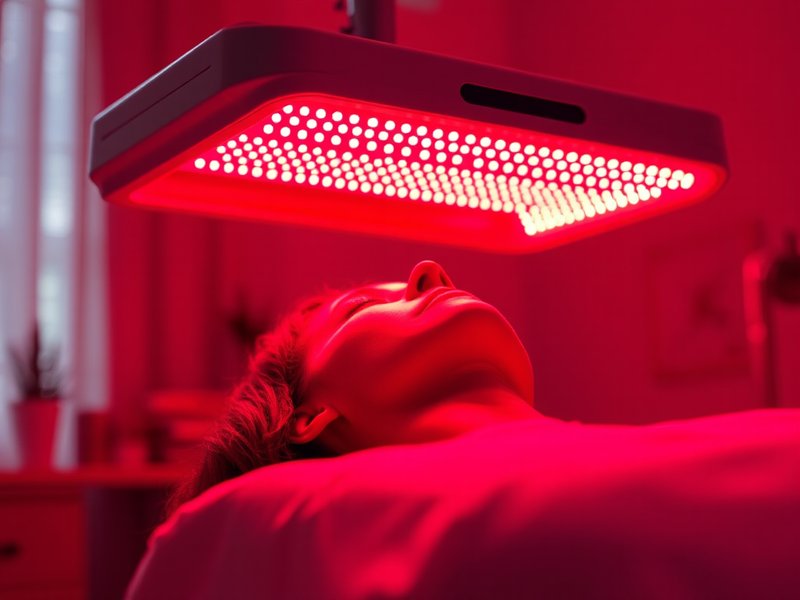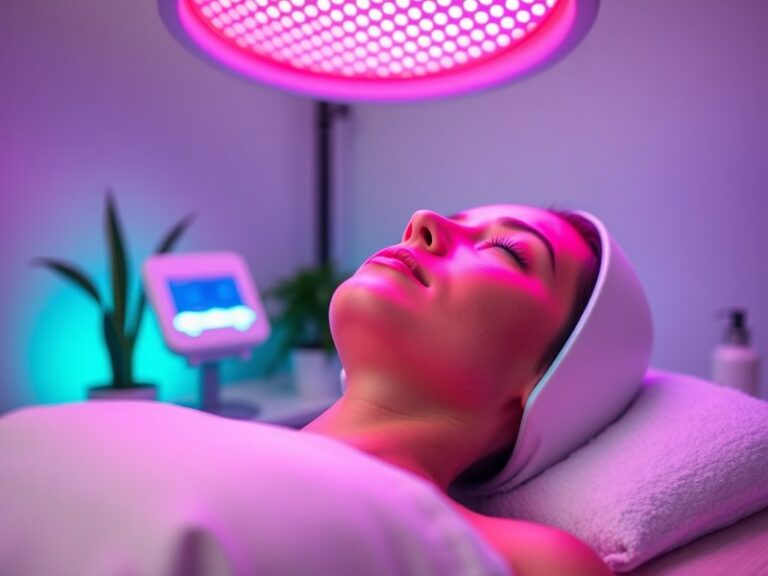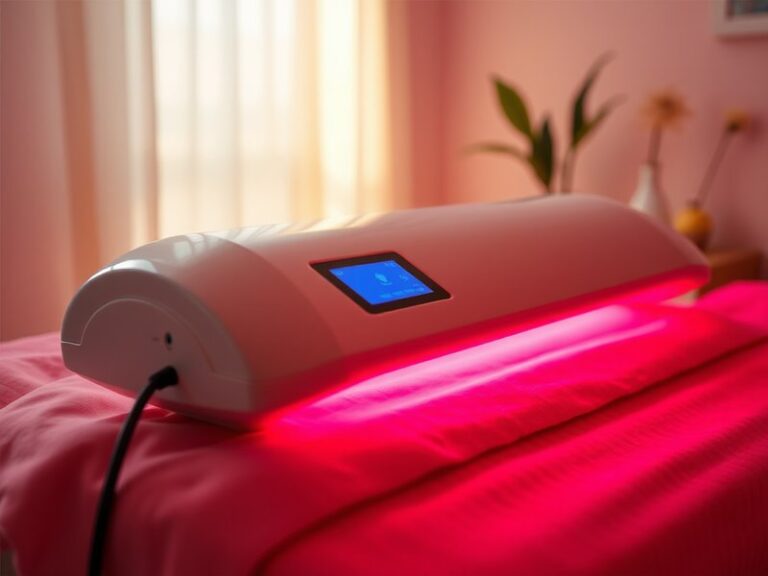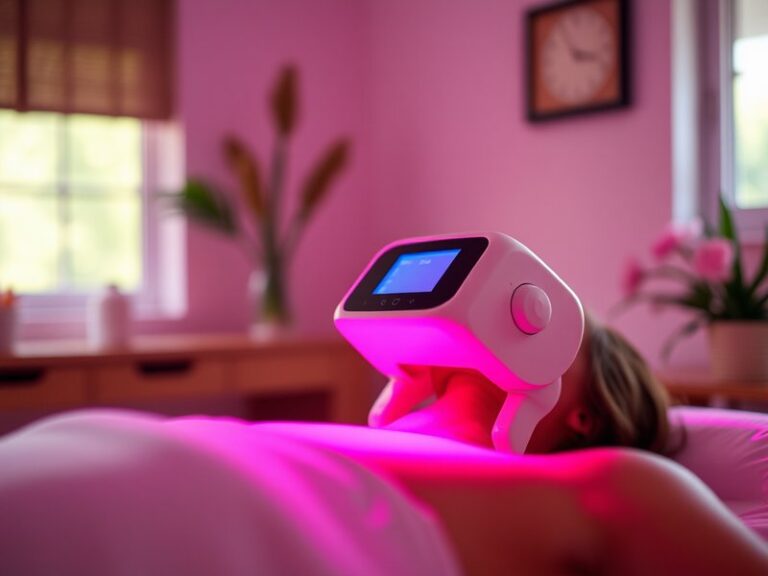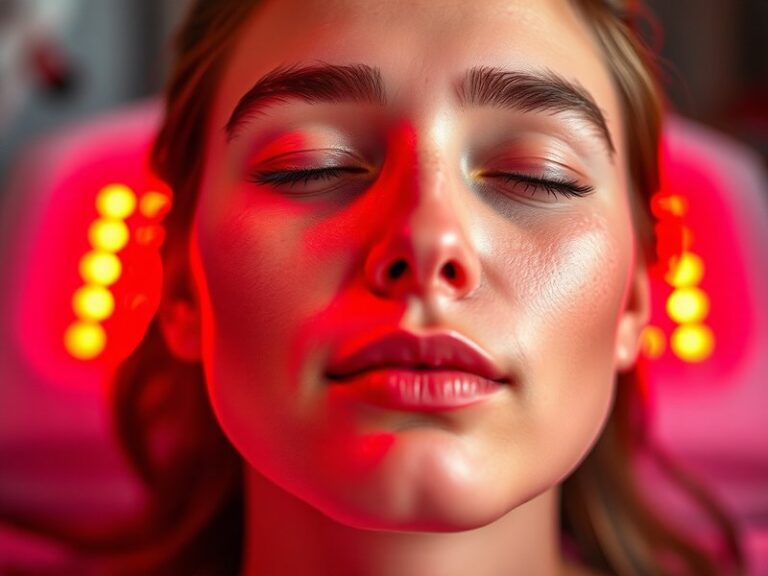Is Red Light Therapy The Same As Near Infrared?
Is Red Light Therapy The Same As Near Infrared?
Are you curious about the differences between red light therapy and near infrared therapy? You’re not alone. Many people are exploring these innovative treatments for a range of health benefits, leading to questions about their similarities and differences.
This article will delve into the distinctions between red light therapy and near infrared therapy. We will explore what each therapy entails, their benefits, considerations, and alternatives to help you make informed decisions about harnessing light for health.
Key Takeaways
- Red light therapy mainly targets superficial tissues, while near infrared penetrates deeper layers of the skin.
- Both therapies have unique benefits tailored to specific health needs and concerns.
- Understanding the differences can help determine which therapy might be more suitable for you.
What is Red Light Therapy and Near Infrared?
Red light therapy (RLT) utilizes low-wavelength red light, typically between 600 to 650 nanometers. It primarily affects the outer layers of the skin, promoting collagen production, enhancing healing, and improving skin appearance.
Near infrared therapy (NIR), on the other hand, operates at longer wavelengths, generally between 800 to 900 nanometers. NIR penetrates deeper into the body, targeting muscles, joints, and even internal organs, making it effective for deep tissue inflammation and pain relief.
The primary difference lies in the depth of penetration: Red light is absorbed at a shallower level, whereas near infrared light can reach deeper biological tissues.
What are the Benefits of Red Light Therapy and Near Infrared?
Both therapies offer unique benefits, which can be significant across various applications. Below are some notable advantages:
Benefits of Red Light Therapy
Red light therapy is known for several advantages:
-
Skin Health: RLT can significantly improve skin conditions such as acne, eczema, and wrinkles. Clinical studies have shown that it stimulates collagen production and enhances skin elasticity.
-
Wound Healing: The therapy promotes faster recovery from injuries by enhancing cellular repair processes, making it useful for wounds and other skin problems.
-
Reduced Inflammation: RLT has been shown to decrease inflammation, providing relief from conditions like arthritis and general muscle soreness.
Benefits of Near Infrared Therapy
Near infrared therapy, due to its deeper penetration, offers distinct benefits:
-
Pain Relief: NIR can effectively alleviate chronic pain and muscle soreness by improving circulation and reducing inflammation in deeper tissues.
-
Improved Joint Mobility: By targeting deeper layers, NIR can enhance joint function and mobility, proving beneficial for those with joint pain or stiffness.
-
Enhanced Recovery: Athletes often utilize NIR for faster recovery after intense workouts, leveraging its effects on muscle regeneration and repair.
Is it Possible to Use Both Therapies Together?
Yes, many individuals combine red light therapy and near infrared therapy to maximize their benefits. This dual approach can effectively address a wide range of health concerns, from skin health to deep tissue healing.
What are the Advantages of Combining Both Therapies?
Combining both therapies can provide a comprehensive treatment experience:
-
Broad Spectrum Treatment: Utilizing both can address issues affecting superficial and deeper tissues simultaneously.
-
Increased Effectiveness: Some studies suggest that combining therapies can enhance overall results, particularly in skin healing and pain management.
-
Versatility: This combined approach can cater to various conditions, making it adaptable to different therapeutic needs.
What are the Disadvantages of Combining Both Therapies?
There are some challenges to consider when combining therapies:
-
Cost: Utilizing both treatments may increase the cost, as equipment for both types or different sessions may be needed.
-
Complexity: Managing two different therapies can complicate treatment regimens, especially for those with busy schedules.
-
Monitoring Results: It may be more challenging to attribute results to one therapy over another when both are in use.
What are the Things to Consider Before Choosing a Therapy?
Before starting any light therapy, there are essential considerations to keep in mind:
Skin Sensitivity
Individuals with sensitive skin should consult a healthcare professional before proceeding, as different wavelengths can cause varying reactions.
Purpose of Treatment
Clarifying the primary goal of treatment helps determine which therapy would be more effective. For skin issues, red light may be more suitable, while for muscle pain, near infrared might be preferable.
Check out our insights on Duration of At-Home Red Light Therapy
Access to Equipment
Ensure that you have access to quality equipment or services that effectively provide the desired type of light therapy. Research reputable clinics or consider high-quality home devices.
What are the Alternatives to Light Therapy?
While red light and near infrared therapies are popular, several alternatives exist:
Laser Therapy
Laser treatments, which use concentrated light beams, can target specific areas while penetrating deeper tissues, offering focused pain relief or aesthetic improvements.
Cryotherapy
Using extreme cold, cryotherapy helps reduce inflammation and pain while promoting recovery. It’s a non-light-based alternative that benefits athletes and those seeking relief from chronic pain.
Find out everything in Can I Use Red Light Daily?
Ultrasound Therapy
Ultrasound works through sound waves to promote tissue healing and can be effective for deep tissue issues and rehabilitation following injuries.
Conclusion: Is it Recommended to Use Red Light Therapy or Near Infrared?
Both red light therapy and near infrared therapy have unique applications and benefits. Depending on your specific needs—whether you’re looking for skin improvements or deeper pain relief—either option could be excellent for enhancing your well-being. It’s essential to consider your health goals, sensitivities, and access to equipment before making a decision.
Frequently Asked Questions
Can red light therapy be used for hair growth?
Yes, studies indicate that red light therapy can stimulate hair follicles, promoting growth in individuals experiencing hair loss.
Is it safe to use red light therapy every day?
Generally, red light therapy is considered safe and can often be used daily. However, it’s best to follow the guidelines or recommendations of your device’s manufacturer and consult a health professional if unsure.
How long does a session typically last?
A typical red light or near infrared therapy session lasts between 10 to 30 minutes based on the treatment area and equipment used.
Can I combine light therapy with other treatments?
Yes, many patients combine light therapy with other forms of treatment, such as physical therapy or skincare routines. However, you should consult a healthcare professional to ensure compatibility.
